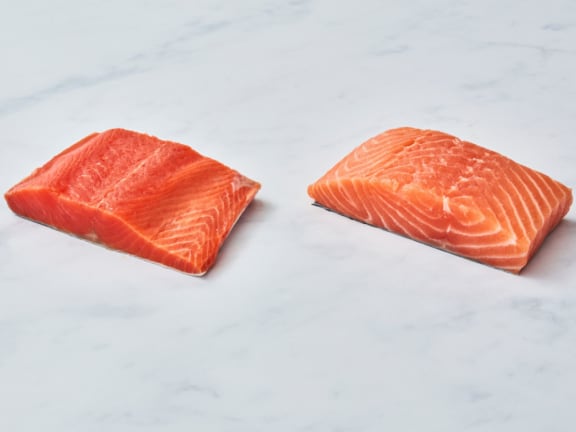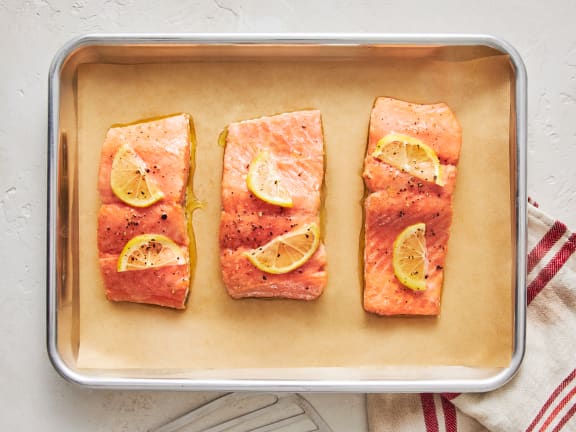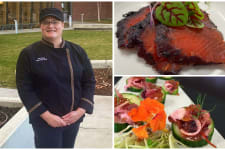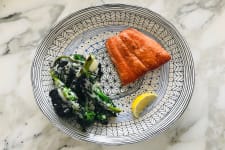As an informed consumer, you already know that the best salmon to buy is wild-caught salmon from Alaska. Alaskan salmon naturally has a nutritional profile that can be beneficial for health. Plus, Alaskan salmon is some of the most sustainable fish to eat. That’s because seafood from Alaska is always responsibly harvested.
But even as an informed consumer, knowing how to buy the best salmon can be a challenge. Seafood fraud is common and can make it difficult for you to know whether you’re buying the real thing. Your local fishmonger may not even carry wild-caught salmon from Alaska. In addition, differences in how wild-caught salmon is preserved and marketed affect the quality of the fish.
To make sure you’re buying the freshest, most flavorful fish available, here are some tips:
What is fish fraud?
Fish fraud or mislabeling fish is a common issue that can make it difficult for consumers to buy the best fish — you might not even be buying the species you were shopping for. Instead, with rampant mislabeling of fish, both in restaurants and at the store, you might be buying a cheaper, lower-quality fillet of fish that’s been mislabeled as a more expensive, higher-quality species.
A 2015 Oceana study on fish fraud tested salmon samples from retailers and restaurants and found that 43 percent were mislabeled. A majority of this mislabeled salmon was farmed Atlantic salmon marketed as wild salmon. There are significant differences in sustainability and health that affect the pricing of farmed and wild salmon, so you’ll want to make sure you’re getting what you’ve paid for.

Tips on Buying the Best Salmon
So how can you spot fish fraud and seafood mislabeling? For the average consumer, here are a few tips that can help you identify mislabeled salmon:
-
A good deal is often too good to be true.
If the price seems a little too low for a wild species like sockeye or king salmon, it might be mislabeled. Get familiar with what a species is generally worth. Then, don’t be shy — inquire about the pricing to find out more about why it’s lower than you’d expect.
-
Look at the fat content.
You’ll want to avoid buying farmed Atlantic salmon, and you can spot it easily because it is relatively high in fat. It will always have very visible marbling, which looks like thicker white fat lines throughout the salmon. A lean, wild species like sockeye or coho won’t have any visible fat lines.
However, wild king salmon is one of the fattier Pacific species. It may have some marbling, which can make it difficult for the average consumer to distinguish it from farmed Atlantic salmon.
-
Notice the color of salmon.
Sockeye, also known as red salmon, will always be a vibrant red fillet. If it’s a paler pink, it’s not sockeye. This tip only applies to sockeye, since wild species like pink and chum salmon are naturally less red due to their diet.
-
Ask the fishmonger when and where the salmon was harvested.
If salmon is being marketed to you in the Lower 48 as “fresh” or freshly harvested wild salmon, be skeptical. Most wild fisheries in Alaska are only open to commercial fishing during the summer months. Because of this, salmon must be frozen or preserved with another method in order for it to be processed and shipped at the peak of quality to anywhere in the Lower 48.
Here’s a calendar for commercial salmon harvests in Alaska:

Image courtesy of ASMI
Buy Salmon Online from a Trusted Source
Ordering salmon online from a trusted source like Wild Alaskan Company is the best way to buy fish. That’s because buying salmon from an online source can be fresher than what your local seafood market offers.
When you see Alaskan salmon at your local market, it’s almost always frozen because the commercial fishing season is limited to the summer months. This is when salmon runs take place every year. In order for salmon to be available and fresh year-round, it must be preserved shortly after harvest through freezing, canning, or any other process of preservation.
But what about the “fresh” salmon at the grocery store? That salmon is almost always a previously frozen product. Fishmongers thaw frozen salmon for display, despite the negative effect this has on the quality of the fish. Once thawed, the quality of fish diminishes — especially if it’s been at the display counter for days.
As a digital fishmonger, Wild Alaskan Company offers high-quality, flash-frozen fillets to its members. The salmon is flash-frozen shortly after harvest to lock in flavor and texture at the peak of quality. When you’re ready to defrost and cook, you can look forward to salmon that tastes just like it’s been pulled in from the sea.






